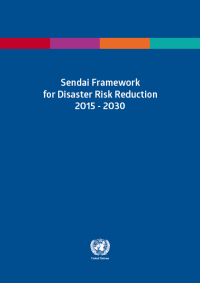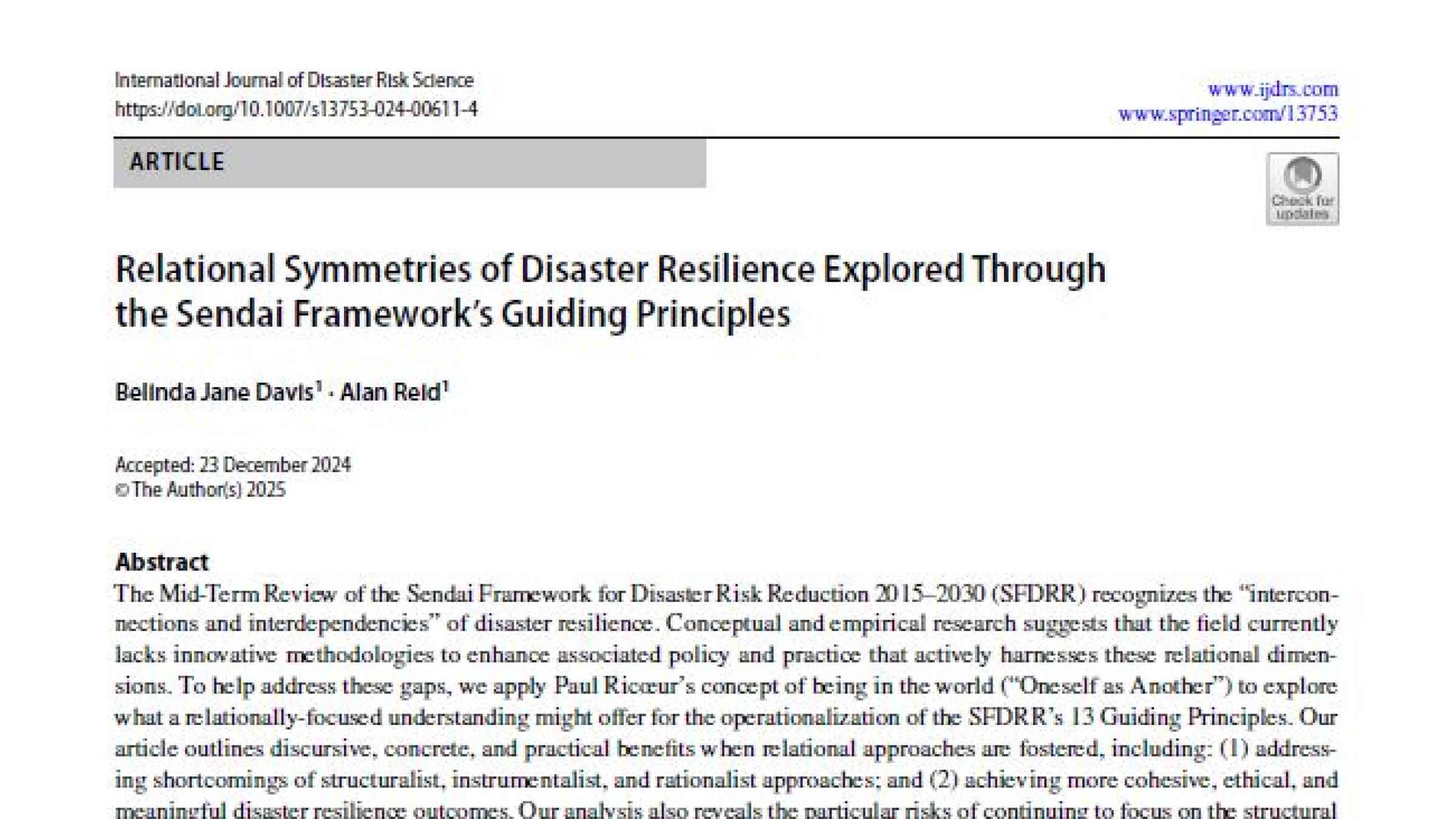Sendai Framework for Disaster Risk Reduction 2015-2030
On this page
The Sendai Framework for Disaster Risk Reduction 2015-2030 was adopted by UN Member States on 18 March 2015 at the Third UN World Conference on Disaster Risk Reduction in Sendai City, Miyagi Prefecture, Japan. The Sendai Framework is the first major agreement of the post-2015 development agenda, with seven targets and four priorities for action.
The Framework aims to achieve the substantial reduction of disaster risk and losses in lives, livelihoods and health and in the economic, physical, social, cultural and environmental assets of persons, businesses, communities and countries over the next 15 years.
(Available in Arabic, Chinese, English, French, Russian and Spanish)
Related
- Sendai Framework at a glance
- Non-official translations of the Sendai Framework for Disaster Risk Reduction (2015-2030) [Persian]
- Reading the Sendai Framework for Disaster Risk Reduction 2015 - 2030
- Chart of the Sendai Framework for Disaster Risk Reduction 2015-2030
- Sendai Declaration
- Third UN World Conference on Disaster Risk Reduction (WCDRR)
Midterm Review of the Sendai Framework
Called for by the UN General Assembly the MTR SF marks the midpoint in the implementation of the Sendai Framework, the 2030 Agenda, the Paris Agreement and the Addis Ababa Action Agenda. It is also an important milestone for other UN frameworks.
Visit the Midterm Review site.
Sendai Gender Action Plan
The Sendai Gender Action Plan (GAP) aims to accelerate progress towards the mutually reinforcing goals of gender equality and the prevention and reduction of disaster risk by ensuring DRR efforts are gender-responsive, and promote and support women’s empowerment and leadership.
The Sendai GAP identifies nine key objectives related to the four priorities of the Sendai Framework, and 33 recommended actions promote gender equality and the empowerment and leadership of women and gender stakeholders in disaster risk reduction.
Publications on the Sendai Framework
Sendai Framework related research
Sendai Framework related reports
National policies and UN resolutions
Are you looking for national, regional or local policies and plans on disaster risk reduction, or United Nations resolutions and reports on DRR?
DRR policies
Find regional, national and local policy documents and declarations on disaster risk, climate adaptation and resilience which serve as the cornerstone for effective disaster risk governance and risk-informed development.
UN resolutions and reports
Explore the documents guiding international efforts to prevent and mitigate disasters, from pivotal resolutions to progress reports from the UN General Assembly.
Monitoring implementation of the Sendai Framework
Strong accountability is one of the corner stones of the Sendai Framework for Disaster Risk Reduction. A set of 38 indicators, recommended by an Open-ended Intergovernmental Expert Working Group, will track progress in implementing the seven targets of the Sendai Framework as well as its related dimensions reflected in the Sustainable Development Goals 1, 11 and 13. The Sendai Framework Monitor will also function as a management tool to help countries develop disaster risk reduction strategies, make risk-informed policy decisions and allocate resources to prevent new disaster risks. The Sendai Framework Monitor can contribute to the Target E of the Sendai Framework related to development of actionable national and local disaster risk reduction strategies by 2020.
More on monitoring the Sendai Framework
Voluntary Commitments
Showcase your commitments towards implementing the Sendai Framework for Disaster Risk Reduction on UNDRR Voluntary Commitments platform.
The platform allows stakeholders to inform the public about their work on DRR while identifying crossovers with others in the field and potential partners with whom to collaborate to maximise impact. Stakeholders can get their achievements highlighted too. All stakeholders (private sector, civil society organizations, academia, media, local governments, etc.) working on DRR can submit and follow-up their commitments.
Hyogo Framework for Action (2005-2015)
In January 2005, 168 Governments adopted a 10-year plan to make the world safer from natural hazards at the World Conference on Disaster Reduction, held in Kobe, Hyogo, Japan.
The Hyogo Framework is a global blueprint for disaster risk reduction efforts during the next decade. Its goal is to substantially reduce disaster losses by 2015 - in lives, and in the social, economic, and environmental assets of communities and countries.











